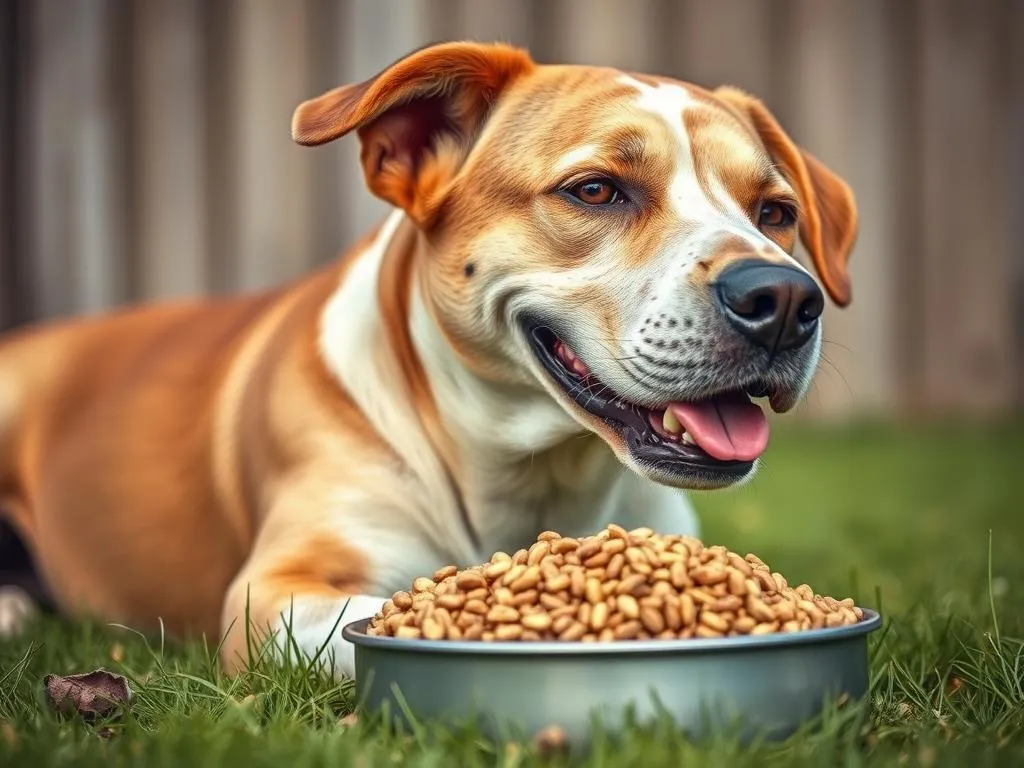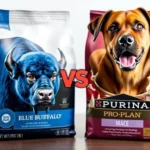
Introduction
When it comes to our dogs’ health, nutrition plays a pivotal role in their overall well-being. Just as we prioritize a balanced diet for ourselves, it’s essential to do the same for our furry companions. In recent years, grain-free diets have gained immense popularity among dog owners, touted for their potential benefits in improving skin health, digestion, and energy levels. However, as we explore the topic of how to add grain to grain-free dog food, it’s crucial to approach this dietary shift with knowledge and caution.
This article aims to provide comprehensive guidance on safely incorporating grains into your dog’s diet, ensuring they receive a balanced nutritional profile that supports their health and vitality.
Understanding Dog Nutrition
The Basics of Dog Nutritional Needs
To navigate the world of dog nutrition, we first need to understand the essential nutrients that contribute to a dog’s health. Dogs require a balanced intake of:
- Proteins: Building blocks for tissues, muscles, and immune function.
- Fats: Provide energy and support the absorption of fat-soluble vitamins.
- Carbohydrates: Vital for energy, particularly for active dogs, and they also offer fiber for digestive health.
- Vitamins and Minerals: Necessary for various bodily functions, including bone health, immune support, and metabolic processes.
Understanding these nutrients helps us recognize why a balanced diet is crucial for maintaining a dog’s health and well-being.
Common Misconceptions about Grain-Free Diets
Despite the popularity of grain-free diets, several misconceptions exist. Many dog owners believe that grains are inherently harmful to dogs. However, it’s important to clarify that:
- Grain Allergies vs. Grain Intolerance: Only a small fraction of dogs suffer from true grain allergies, which can lead to skin issues and digestive problems. Many dogs may have an intolerance rather than a full-blown allergy, and grains can be a beneficial part of their diet.
- Benefits and Drawbacks: While some dogs may thrive on grain-free diets, others may experience nutritional deficiencies. Dogs need a variety of nutrients, and eliminating grains can sometimes lead to an imbalance.
The Role of Grains in Dog Food
Nutritional Benefits of Grains
Grains can play a vital role in a dog’s diet, offering several nutritional benefits:
- Energy Source: Grains like rice and oats are excellent sources of carbohydrates, providing the necessary energy for daily activities.
- Fiber Content: Grains contribute to digestive health by providing fiber, which aids in regular bowel movements and can help maintain a healthy weight.
Common grains used in dog food include:
- Rice: Easily digestible and a common filler in many dog foods.
- Oats: High in soluble fiber, which can help manage cholesterol levels.
- Barley: A good source of vitamins and minerals, including selenium and magnesium.
Potential Risks of Grain-Free Diets
While grain-free diets can be beneficial for some dogs, there are potential risks associated with long-term grain avoidance. Research has indicated a possible link between grain-free diets and certain health issues, particularly dilated cardiomyopathy (DCM), a serious heart condition. This concern highlights the importance of evaluating your dog’s diet and considering the inclusion of grains to ensure they receive a well-rounded nutritional profile.
How to Add Grain to Grain-Free Dog Food
Assessing Your Dog’s Current Diet
Before making any dietary changes, it’s crucial to assess your dog’s current diet. Evaluate the nutritional balance of their food and observe any signs that may indicate a need for added grains. Some signs that your dog may benefit from grains include:
- Digestive issues, like irregular bowel movements.
- Low energy levels or lethargy.
- Skin problems that might be linked to nutritional deficiencies.
Choosing the Right Grain
When considering how to add grain to grain-free dog food, selecting the right type of grain is paramount. Factors to consider include:
- Digestibility: Some grains are easier for dogs to digest than others. For instance, brown rice is generally more digestible than whole grains like barley.
- Nutrient Content: Look for grains that provide additional nutrients. Quinoa, for example, is high in protein and contains essential amino acids.
Here are some safe and healthy grains for dogs:
- Brown Rice: A highly digestible grain that is a common choice for dogs with sensitive stomachs.
- Oats: Packed with fiber and beneficial nutrients, oats are a great addition to your dog’s diet.
- Quinoa: A complete protein source that is also gluten-free.
Gradual Introduction of Grains
Once you’ve chosen the right grain, it’s essential to introduce it gradually. Sudden dietary changes can lead to digestive upset. Follow these steps for a smooth transition:
- Start Small: Begin by adding a small amount of the chosen grain to your dog’s existing food.
- Mix Thoroughly: Ensure the grains are well mixed with the current dog food to promote even consumption.
- Monitor Reactions: Observe your dog for any signs of digestive upset, such as vomiting or diarrhea.
- Increase Gradually: If no adverse reactions occur, gradually increase the amount of grain over the course of a week or two.
Portion Control and Serving Suggestions
Determining how much grain to add depends on your dog’s size, activity level, and overall health. Here are some guidelines:
- Small Dogs: Start with 1-2 tablespoons of cooked grain mixed into their food.
- Medium Dogs: Aim for 2-4 tablespoons, adjusting as necessary based on their energy levels.
- Large Dogs: Consider adding ¼ to ½ cup of cooked grain, depending on their activity and nutritional needs.
You can incorporate grains into homemade dog food or mix them with commercial dog food. For homemade options, consider preparing a mix of cooked grains, lean proteins, and vegetables to provide a balanced meal.
Monitoring Your Dog’s Health
Observing for Allergic Reactions or Digestive Issues
After introducing grains to your dog’s diet, it’s vital to monitor them closely for any signs of intolerance or allergic reactions. Some common indicators include:
- Diarrhea or loose stools.
- Vomiting.
- Excessive scratching or skin irritations.
If you notice any of these symptoms, consult your veterinarian for guidance.
Regular Vet Check-Ups and Dietary Reviews
Routine check-ups are essential for monitoring your dog’s health and assessing their dietary needs. During these visits, discuss any changes in diet, and be open to adjusting based on your vet’s recommendations. Regular health evaluations can help identify potential issues arising from dietary changes and ensure your dog remains healthy and happy.
Conclusion
In conclusion, maintaining balanced nutrition is critical for your dog’s health. While grain-free diets can be beneficial for some, it’s essential to evaluate the potential advantages of adding grains to their diet. By understanding their nutritional needs and carefully introducing grains, you can enhance their overall health and well-being. A varied and nutritious diet can lead to a happier, healthier life for your furry friend.
FAQs
Can all dogs eat grains?
Most dogs can eat grains without issues, but it’s essential to monitor for any signs of allergies or intolerances. If your dog exhibits negative reactions, consult your veterinarian.
What if my dog has a grain allergy?
If your dog has a confirmed grain allergy, it’s best to avoid grains altogether and focus on finding alternative sources of carbohydrates and nutrients.
How do I know if my dog is getting enough nutrients?
Regular vet check-ups and monitoring your dog’s energy levels, coat condition, and overall health can provide insights into their nutritional status. You can also consult with your vet about dietary adjustments.
Are there specific grains that are better for dogs?
Grains like brown rice, oats, and quinoa are excellent choices due to their digestibility and nutritional benefits. Always choose high-quality grains and consult your vet for personalized recommendations.









